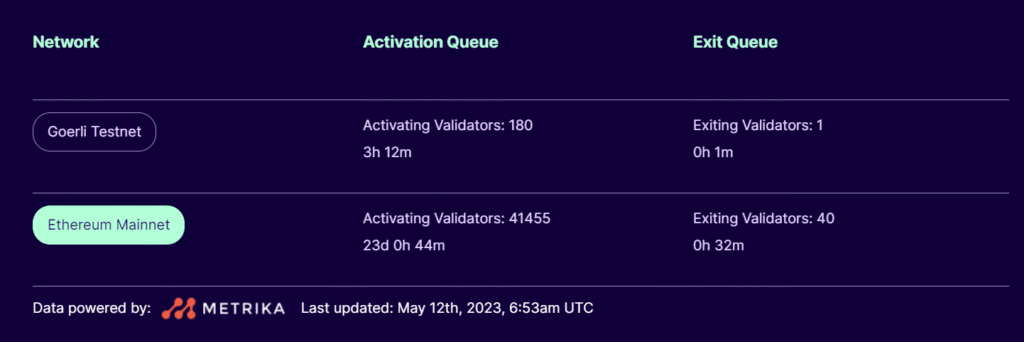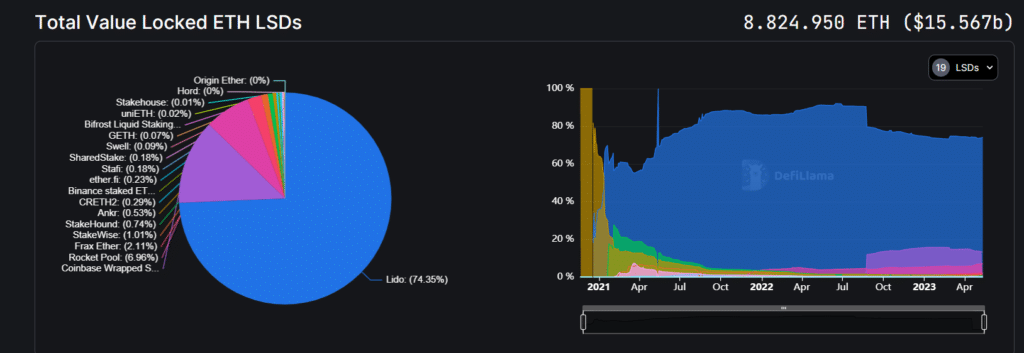Binance has just made an important announcement: from 18 May, all BETH crypto redeems within the exchange will be processed in just 5 days, significantly reducing the wait for users to redeem their ETH.
BETH represents a liquid version of Ethereum stakes on Binance, where users can use it as liquidity while waiting to redeem ETH from the Beacon chain.
Summary
Binance and the decision to reduce the wait time to redeem BETH crypto
As previously announced, Binance announced yesterday that as of 18 May at 08:00 UTC, all redemption requests for the BETH crypto, the liquid staking version of Ethereum, will be processed in just 5 days.
This is great news for users of the crypto exchange, as the average wait time to redeem stacked ETHs is currently around 15 days.
The decision to shorten the withdrawal processing timeframe is based on a commitment to providing the best end-user experience in a service where wait times are not only dependent on Binance, but also and most importantly on the traffic and participants within the Beacon Chain.
It is curious to note that, in fact, new validator activations far outnumber exit requests these days.
Specifically, there are 41,455 validators waiting to join the Beacon Chain, in a queue that will be cleared in approximately 23 days, while on the other side there are only 40 validators who will have completed the exit process within the next half hour.
In recent days, the number of outgoing validators has also dropped to zero.
This fact, along with the ability of the user side to withdraw their staked ETHs more quickly, either directly on the ETH 2.0 platform or through intermediaries such as Binance, reinforces the narrative of the longevity and resilience of the Ethereum network.
At the time of writing, the number of locked coins within the Beacon chain has reached a new all-time high of 19,767,969 ETH, easing selling pressure in the markets and creating scarcity.

Crypto BETH and other liquid versions for ETH staking
The crypto BETH is just one of the liquid versions in circulation to support the staking of ETH and the transition from POW to POS that took place with the Shapella hard fork on 12th April.
This type of token can be redeemed at a 1:1 ratio with the amount of coins previously staked, now that the staking of ether on the Beacon Chain has been legitimised.
BETH was launched by Binance in April 2021, and for two years served as a way for users to enjoy alternative liquidity while their ETHs were locked into the ETH 2.0 platform.
The crypto is actually priced the same as ETH (with a minimum spread) and can be traded for other assets on Binance’s internal market and other exchanges such as Okx, Huobi and PancakeSwap.
Some of the most popular liquid versions that have a parity relationship with ETH staked on the Beacon chain include Lido, Coinbase wrapped staked ETH, Rocket Pool and StakeWise.
In total, the liquid staking market for ETH is worth $15.56 billion, which is approximately 40 percent of the value deposited by users to support the blockchain’s proof-of-stake. Lido has a dominant position with 74.35% of the market.
These tokens not only give users additional liquidity that they would not have had if they had decided to deposit their coins on ETH 2.0 themselves, but also allow those who do not have large amounts of capital to participate in the stakes.
In fact, in order to activate the validator software without relying on third-party intermediaries such as those mentioned above, it is necessary to have as much as 32 ETH at one’s disposal, which is currently equivalent to $56,300.
It will be interesting to see how this niche market develops and whether there will be more or less of an influx towards liquid staking services in the coming years, both with regard to Ethereum’s staking validators and for other protocols and blockchains.

15 May opens for Lido withdrawals: volatility on the way?
As the Beacon Chain attracts more and more inbound validators and fewer and fewer outbound validators, all eyes are on one date in particular: 15th May.
On that day, Lido, the largest liquid wagering platform on the market, will allow the release of no less than 270,000 ETHs, equivalent to around $500 million, which will most likely be poured into the cryptocurrency markets.
This is a large amount, but it is not the same as the remaining 6.29 million ETHs, which will gradually be released for an equivalent of $11 billion.
Volatility is therefore expected in the price of the second largest cryptocurrency by market capitalisation and the crypto market in general.
As the news was announced by Lido itself and spread by the various crypto influencers, traders could anticipate trades by going short ETH even over the weekend.
However, more than the number of ETHs to be taken by Lido per se, the fear of market declines is related to the mainstream narrative of ‘potential selling pressure’.
If we take a close look at the average trading volumes on Ethereum, we see that there have been $9.7 billion worth of trades in the last 24 hours.
The 270,000 ETH that MAY (not necessarily) be sold represent only 5% of the coins traded daily.
Be careful because in such complex situations there are often manipulation attempts and up or down fakes that force the forced liquidation of leveraged positions.
It is much better to trade on the spot market or use low leverage to prevent the whales from getting the upper hand over small traders.
Be on your guard!




